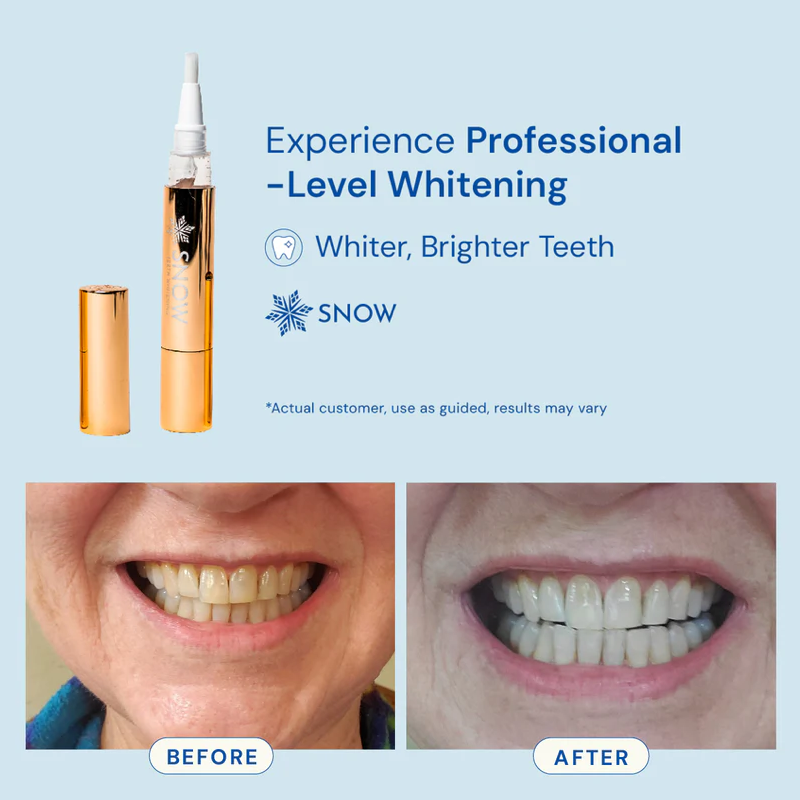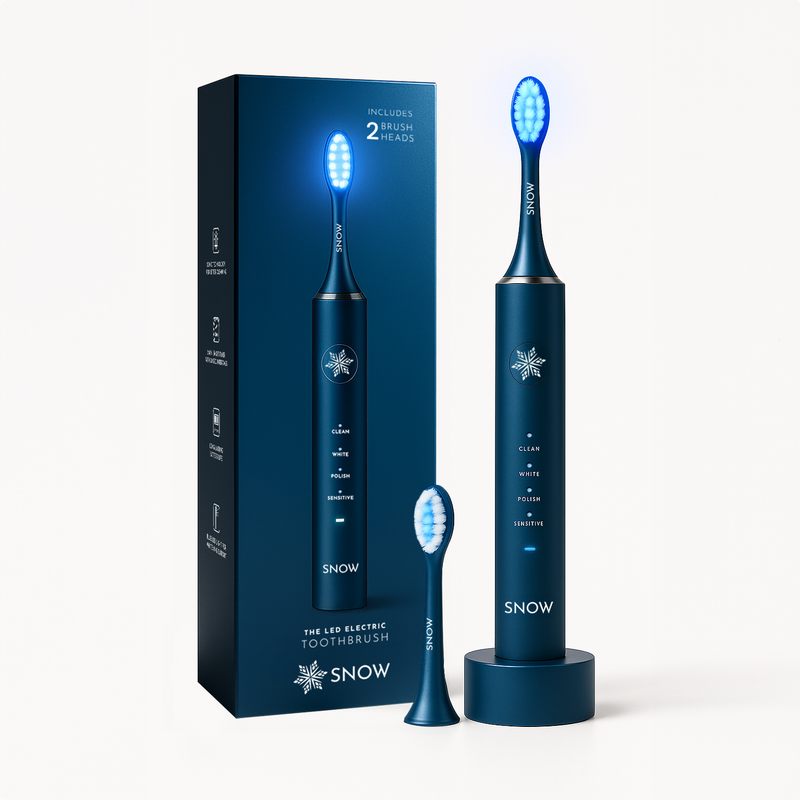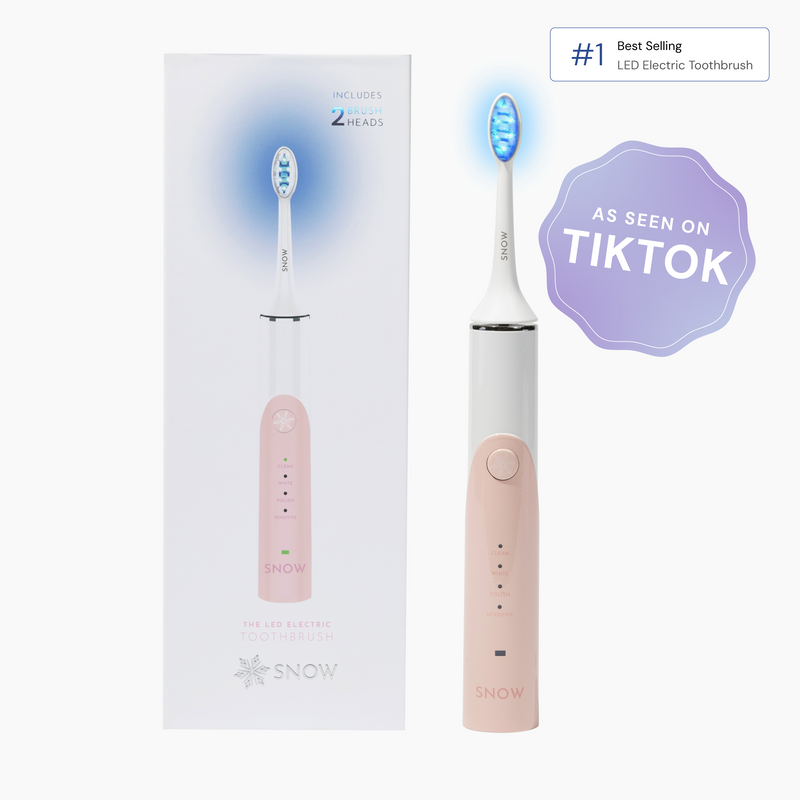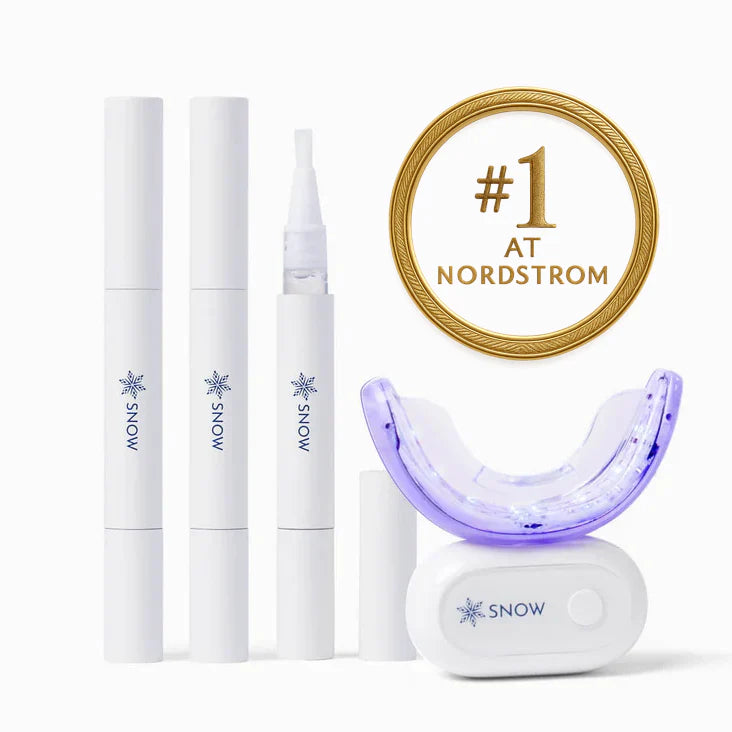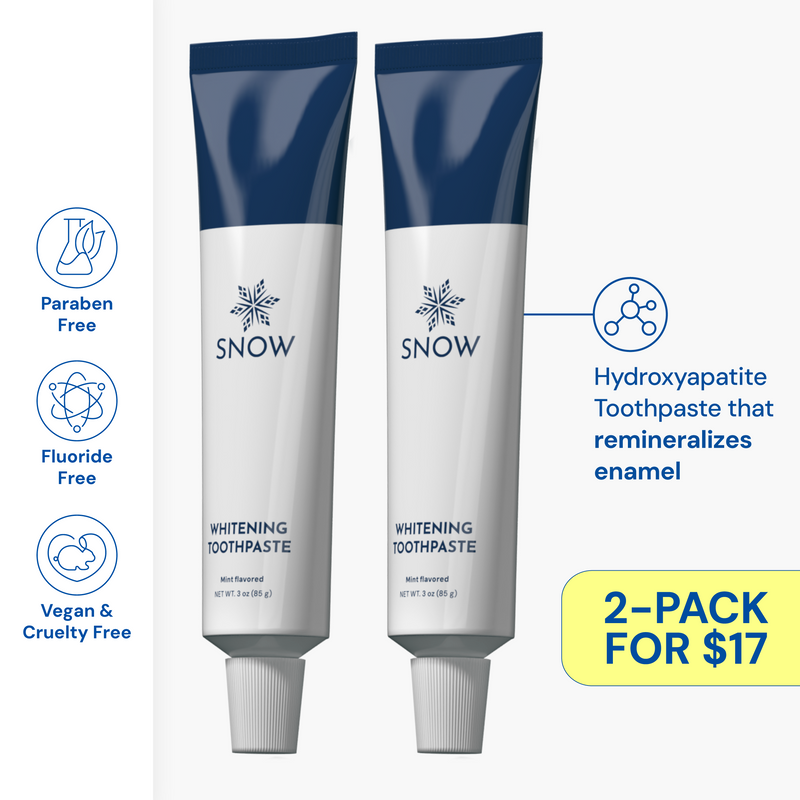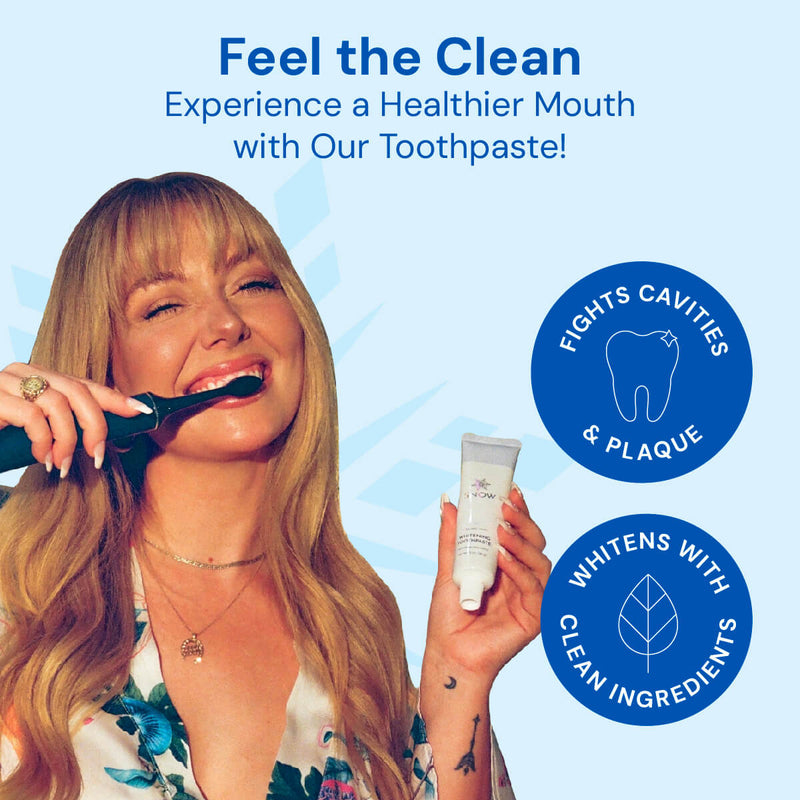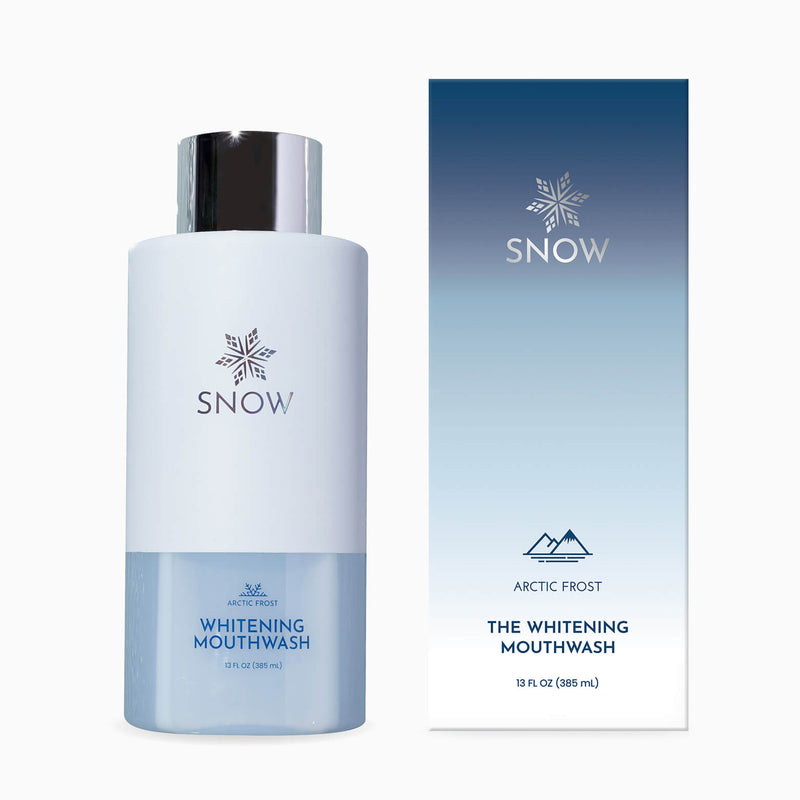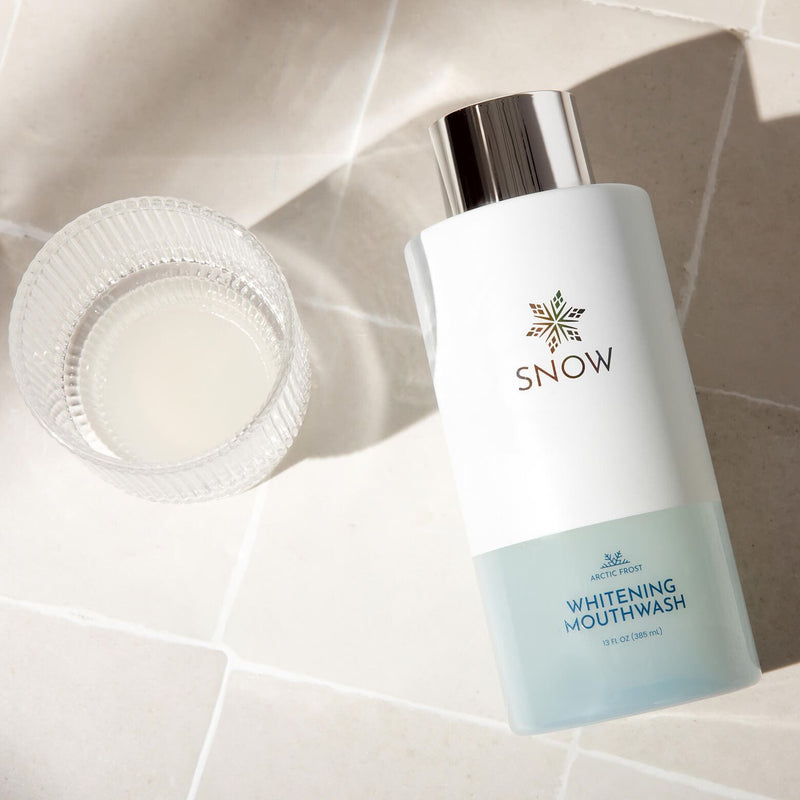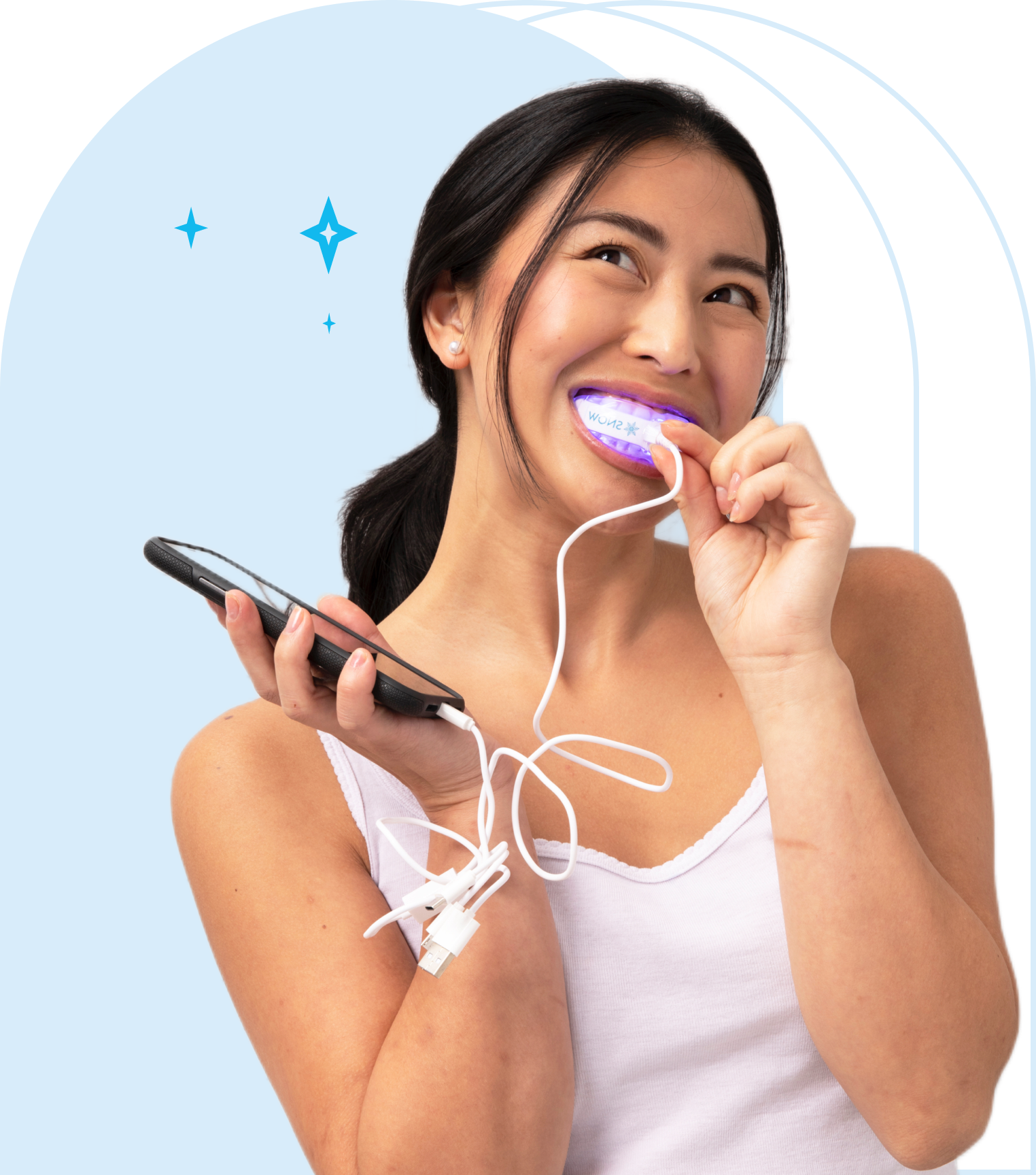Whitening strips can make a real difference when used correctly. The mistake most people make is applying them at the wrong time, which can slow down the teeth whitening process or irritate sensitive teeth. If you want a brighter smile that lasts, timing matters. In this guide, you’ll learn the best time to use teeth whitening strips, how to protect your enamel, and how to get the most out of every whitening gel treatment.
Key Takeaways
-
Applying teeth whitening strips in the evening is generally more effective due to reduced exposure to staining foods and uninterrupted wear time.
-
Brushing teeth before applying whitening strips enhances adhesion and effectiveness; however, it is essential to wait 30 minutes after brushing before use to minimize sensitivity.
-
For long-lasting results, users should maintain a consistent whitening routine and avoid stain-causing foods and beverages for at least 48 hours after treatment.
When Is the Best Time to Use Teeth Whitening Strips?
Timing is crucial when using whitening strips effectively. Whether your goal is a brighter smile or fewer flare-ups of tooth sensitivity, applying strips at the right moment can make your results last longer and feel more comfortable.
Choosing the best time isn't just about convenience; it's about protecting your enamel, avoiding restaining, and giving the whitening gel the time it needs to do its job properly.
Let’s break down the pros and cons of whitening at night versus in the morning, and how to choose what works best for your lifestyle.
Why Nighttime Whitening Works Better
Most people see better results from whitening before bed, and here’s why:
-
No exposure to stains after whitening. You’re not eating or drinking during sleep, which means there’s no risk of immediately reversing the effects of your whitening session. This helps maintain the brightening effects of the whitening gel.
-
More contact time. Whitening strips typically work for over 30 minutes, but your teeth stay more receptive to whitening for a short time after removal. If you’re not introducing stain-causing foods or drinks during that period, you extend the whitening window naturally.
-
Less sensitivity. If you experience tooth sensitivity, evening use can be more comfortable. Your enamel has time to recover overnight without the added irritation from hot or acidic beverages.
Tip: Always brush your teeth about 30 minutes before applying strips to avoid sensitivity and maximize adhesion. A fluoride-based whitening toothpaste can help prep your enamel while also protecting against post-treatment irritation.
If you have sensitive teeth or are new to whitening, look for teeth whitening products that use carbamide peroxide instead of hydrogen peroxide. It works more gradually but can be gentler and safer for longer use.
For a breakdown of how different ingredients work, visit our guide on carbamide vs. hydrogen peroxide.
When Morning Whitening Might Work for You
Morning whitening is a convenient option if you're on a consistent schedule, but it does come with more rules. Your enamel is slightly more porous after whitening, and eating or drinking too soon can introduce new stains right away.
Here’s how to make it work:
-
Brush your teeth first with a soft electric toothbrush. This helps remove plaque and allows the whitening gel to stick more evenly.
-
Apply strips early, such as while getting ready for the day or during your skincare routine.
-
Wait at least 30 minutes post-whitening before consuming anything except water. Coffee, tea, juice, or even smoothies can undo your progress immediately.
Using whitening strips in the morning can still lead to a brighter smile if you’re strict with your follow-up care. Those prone to tooth sensitivity may benefit from adding a post-whitening enamel serum or fluoride rinse to reduce discomfort and protect results.
Want to enhance your morning routine? Discover how to enhance your results with purple toothpaste, which helps balance yellow tones and further brighten your smile.
Choosing the Right Time for You
There’s no universal “right time” to use whitening strips; the key is choosing the time that supports your lifestyle and delivers consistent, long-term results.
If you’re someone who drinks coffee or wine regularly, night whitening is usually safer because it gives your enamel time to reset before your next exposure to stains. If you have a structured morning routine and are willing to avoid food or drinks after whitening, mornings can still work well.
Whichever you choose, consistency is more important than timing. A daily habit of using whitening strips properly, along with brushing, flossing, and avoiding staining foods, will always give better results over time.
If you're looking to maintain your brighter smile and reduce sensitivity, products like whitening-safe toothpaste, enamel-repair serums, and fluoride treatments can make a significant difference. And for those managing tooth sensitivity, low-concentration carbamide peroxide formulas may offer a safer approach.
Want to know if your everyday toothpaste is helping or hurting your routine? Read more in our post on whether whitening toothpaste is safe for daily use.
Quick Comparison: Night vs. Morning Whitening
Here’s a simple side-by-side comparison to help you decide when to use whitening strips based on your routine, goals, and sensitivity concerns:

Pre-Application Guidelines
Getting ready to whiten your teeth? Follow these pre-application steps to ensure your whitening strips work effectively and comfortably. Each part of the routine plays a key role in helping you achieve a brighter smile while protecting your enamel and gums.
Step 1: Read the Product Instructions Carefully
Before using the product, always check the product instructions. Every whitening product may have slightly different usage guidelines, and following the step-by-step guide ensures you're using it safely and getting the best results.
If you're unsure about ingredients or how long to apply, consult your dentist for guidance. Choosing the right formula can help avoid irritation and make the experience more comfortable.
Step 2: Brush Your Teeth Gently
Start by brushing your teeth the right way to clear surface buildup and set the stage for a more even whitening treatment:
-
Use a soft-bristled toothbrush and gentle circular motions.
-
Brush at least 30 minutes before applying the strips.
-
Rinse your mouth thoroughly to remove any leftover toothpaste.
This helps remove stains and buildup, allowing the strips to adhere better. It also preps your enamel to respond more evenly to the whitening gel.
Tip: If you experience sensitivity, use a toothpaste for sensitive teeth and brush more gently.
If you're wondering whether daily use of whitening toothpaste could be too harsh, you’re not alone, learn whether whitening toothpaste is safe to use every day.
Step 3: Wait Before Applying the Strips
Give your enamel time to settle by waiting at least 30 minutes after brushing. Here’s why that pause matters:
-
Reduce the risk of tooth sensitivity.
-
Avoid irritation from direct contact between gel and freshly brushed teeth.
-
Minimize gum discomfort
Additionally, refrain from eating or drinking during this period. Certain foods or acidic beverages can interfere with the whitening process. If necessary, stick to drinking only water.
Maintaining good oral hygiene, including daily brushing and daily flossing, supports long-term whitening results and improves your overall oral health.
Learn how prep affects your whitening success.
Step 4: Personalize Your Prep (Optional)
Everyone’s mouth is different, so it’s worth adjusting the routine if you’re prone to sensitivity. Consider these options:
-
Wait longer than 30 minutes before applying.
-
Use a desensitizing toothpaste beforehand.
-
Check with your dentist if you are unsure about the product's ingredients or instructions.
Some users find extra comfort by modifying their routine to fit their personal preference. A little trial and error can go a long way in finding what works best for you.
Regular dental check-ups, good oral hygiene habits, and close attention to product instructions all work together to help you achieve a safer, more effective whitening experience.
Post-Application Care Protocol
Once you've completed your whitening session, what you do next can make or break your results. A proper post-application routine protects your enamel, maintains your whitening effects, and helps preserve a healthy smile for a longer period.
Whether you're using flexible strips coated with carbamide or hydrogen peroxide, your enamel is more sensitive immediately afterward. This short recovery period is when your teeth are most vulnerable to re-staining or discomfort, so take it seriously.
Step 1: Rinse Your Mouth Thoroughly
Right after removing your whitening strips, rinse your mouth with water to flush out any residual gel. This helps remove leftover whitening ingredients, reduces the chance of gum irritation, and leaves your teeth clean before you continue your oral care routine.
Use lukewarm water and avoid strong mouthwashes for the first hour, especially if you tend to experience sensitivity.
Why it matters: Even trace amounts of whitening gel can cause irritation or uneven results if left on the enamel or gums.
Learn more about safe whitening from the ADA.
Step 2: Wait Before You Brush
Give your enamel time to stabilize by waiting at least 30 minutes before brushing your teeth. Brushing too soon after using whitening strips can wear down softened enamel and lead to increased tooth sensitivity.
When it’s time to brush, use a soft-bristle toothbrush and fluoride toothpaste formulated for sensitive teeth. Use gentle circular motions to clean without irritating the gums or enamel.
This minor adjustment to your whitening routine can significantly enhance comfort and promote long-term oral health.
Step 3: Avoid Staining Foods and Drinks
For the next 24 to 48 hours, it’s important to avoid staining foods and drinks while your enamel is still porous. These include:
-
Berries
-
Soy sauce
-
Colored sauces (like tomato or curry)
-
Coffee, tea, red wine
If you do consume these, rinse your mouth immediately or follow up with drinking water. Keeping a bottle of whitening product handy can go a long way in protecting your whitening results.
This post-treatment window is critical. Your teeth have been primed to lift stains — but they’re also more likely to absorb new ones.
Step 4: Maintain Good Oral Hygiene
A strong whitening routine doesn’t end with the strips. Keep up your daily oral hygiene by:
-
Brushing twice a day with a soft-bristle toothbrush
-
Using gentle circular motions to protect enamel
-
Practicing daily flossing
-
Drinking water regularly to rinse away debris
This helps remove plaque and food particles that would otherwise dull your results. Using whitening products too frequently without proper care can harm your enamel, so balance is key.
Scheduling regular dental check-ups and occasional professional treatments also keeps your smile looking its best. Dentists can assess whether your current whitening products are effective or not and offer advice tailored to your specific needs.
Frequency and Duration Recommendations
How often you use whitening strips can make a big difference in both the results you see and how your teeth feel throughout the process. Most whitening products recommend daily use for a set period. The ideal routine depends on the formula, your oral health, and how your teeth respond to treatment.
Initial Treatment Course
During the initial treatment phase, whitening strips are typically applied once a day for 7 to 14 days. This is often enough time to lift surface stains and create a visibly whiter smile. If you're using a formula with hydrogen peroxide or carbamide peroxide, make sure to follow the product instructions carefully. According to the American Dental Association, adverse effects can happen, but they’re usually mild and temporary.
If you start to experience tooth sensitivity, a common side effect, don’t panic. You can:
-
Switch to a gentler formula.
-
Use a desensitizing toothpaste.
-
Take longer breaks between sessions.
These small adjustments can help maintain your whitening routine without sacrificing comfort.
Maintenance Treatments
Once your initial course is done, maintenance is key. To keep your results from fading, most people find that using whitening strips every 4 to 6 weeks is enough. Just be sure to continue practicing good oral hygiene in between, including daily brushing, flossing, and being mindful of staining foods like coffee, tea, or red wine.
It’s also worth noting that over-whitening can lead to enamel issues, so more isn't always better. Regularly checking in with your dentist and being mindful of how your teeth feel is the best way to maintain a healthy smile and achieve long-lasting results.
Managing Tooth Sensitivity
Tooth sensitivity is one of the most common side effects people notice while using whitening strips. But the good news? With a few smart choices, you can still get a dazzling smile without sacrificing comfort. The key is selecting the right products, adjusting your whitening routine as needed, and providing consistent care to support your enamel.
Choosing the Right Products
Not all strips are created equal. If you’ve experienced discomfort when applying whitestrips, it’s worth looking for a formula designed for sensitive teeth. Whitening agents like hydrogen peroxide and carbamide peroxide are effective, but can be irritating to some individuals, especially when used without proper preparation and aftercare.
Look for products bearing the ADA Seal of Acceptance, which indicates that they’ve been evaluated for both safety and effectiveness. It’s your best bet for reducing sensitivity and still getting real results.
Support Your Enamel with the Right Toothpaste
Switching to a toothpaste formulated for sensitivity can make a big difference. Fluoride-based options, combined with potassium nitrate, help strengthen enamel and alleviate discomfort. It’s a simple change that can improve your experience with whitening strips and protect your teeth during and after treatment.
Use a soft-bristled toothbrush and apply gentle circular motions while brushing, especially if you’re undergoing treatment. And don’t forget to rinse your mouth thoroughly after whitening to clear away any leftover whitening agents.
Professional Standards and Safety
Selecting teeth whitening products with the ADA Seal of Acceptance ensures they have undergone rigorous testing for safety and effectiveness. Following the specific instructions provided with each tooth whitening strip product is crucial for optimal results.
Maintaining a consistent oral hygiene routine during teeth whitening helps remove plaque or food particles that could interfere with effectiveness. Brushing twice a day with fluoride toothpaste and daily flossing are essential practices to uphold your oral health.
ADA Acceptance
The ADA Seal of Acceptance serves as a guide for consumers to choose safe and effective teeth whitening products. Products bearing this seal have undergone thorough evaluation for safety and effectiveness, ensuring they meet high standards for teeth whitening.
Choosing products with the ADA Seal provides consumers with confidence in their safety and performance, enabling them to achieve their whitening goals without compromising their dental health.
Consulting a Dentist
Consulting a dental professional before starting whitening treatments can help in the following ways:
-
Identify individual dental issues.
-
Tailor recommendations accordingly
-
Assess your teeth for hidden issues that might affect whitening results.
-
Recommend suitable treatments
A dental consultation helps identify individual risks associated with whitening treatments and tailors recommendations to the patient’s specific dental health needs. This ensures that your whitening routine is both safe and effective, yielding the best possible results.
Consistency in Whitening Application
Once you’ve found a routine that works for your teeth, stick to it. Consistency helps reinforce whitening results and prevents new stains from setting in. Most users benefit from touching up every 4 to 6 weeks and avoiding heavily staining foods in between.
A few lasting habits to support your results:
-
Brush twice daily with a fluoride-based toothpaste.
-
Floss and rinse your mouth regularly.
-
Schedule professional cleanings and regular dental checkups.
-
Use whitening strips only as directed and not too frequently.
These small but powerful habits go a long way in maintaining good oral health and a dazzling smile that lasts.
Browse Teeth Whitening Solutions
Final Thoughts
Achieving a noticeably brighter smile takes more than just applying whitestrips. From timing your treatments right to supporting your enamel with the right care, small habits make a big difference. Nighttime use, proper brushing, and avoiding staining foods all help maintain your results. If you experience sensitivity, a gentler routine or sensitive-friendly products can keep things comfortable. And don't forget your dentist, regular checkups keep everything on track.
Want an easy place to start? Snow’s whitening kits are designed for comfort, safety, and visible results.
Frequently Asked Questions
Do you have questions about how to use whitening strips or how to keep your results lasting longer? Here are quick answers to the most common things people ask before, during, and after their whitening routine.
What is the best time to use teeth whitening strips?
The best time to use teeth whitening strips is at night, as this allows for prolonged contact with the teeth without interference from food or drink. This maximizes their whitening effects.
How often should whitening strips typically be used during the initial treatment course?
To achieve optimal results, whitening strips should typically be used once daily for a duration of 7 to 14 days.
What should you do before applying whitening strips?
Before applying whitening strips, brush your teeth and wait about 30 minutes to avoid gum swelling, ensuring a better fit and effectiveness of the strips.
Can teeth whitening strips cause tooth sensitivity?
Yes, teeth whitening strips can indeed cause temporary tooth sensitivity due to the peroxide in the gel, but this sensitivity typically subsides once you stop using the strips.
How can one maintain whitening results after the initial treatment?
To maintain whitening results after the initial treatment, it's essential to schedule maintenance treatments every 4 to 6 weeks. This regular upkeep will help ensure your smile stays bright and fresh.

















































